Thinking of getting your colours done? What you need to know about colour analysis.
Posted by Victoria Lochhead on
If you’ve ever watched Bridget Jones’s diary, you might have heard Bridget’s mother talking about ‘getting her colours done’. Or maybe you have a friend who, on every shopping trip pulls out their fabric swatch of colours that they religiously stick to. Perhaps you’ve always wondered what getting your colours done actually is, or maybe you’re thinking of taking the plunge and booking a session for yourself? This article will guide you through the what, why and how of colour analysis and share some tips on what you might need to consider before booking a consultation.
What is ‘Getting your colours done’?
Colour analysis is a process by which a trained colour consultant examines the naturally occurring tones in your skin, hair and eyes and demonstrates to you what the best colours are for you to wear that are in harmony with your own colour tones. This would apply to your clothing, jewellery, make-up and even hair colour.
Colour analysis isn’t about the colour itself, but the tone of the colour and what that tone does to our natural colouring. You can wear blue, green, or red, but the blue, green or red that looks good on you might be very different from the one that complements me, because we have different natural colouring and so suit different shades of those colours.
There are two main methods for colour analysis:
Seasonal colour analysis: This method is probably the most widely known, whereby all colour tones are divided into four categories which are named after the four seasons. So if for example, you have a friend who tells you they are an Autumn, what that means is that they suit colours from the ‘autumn’ palette, which is a mix of colours that are all warm tones, deeper colours and colours with a slight muted feel to them. Many colour consultants are trained in seasonal analysis, and it is a relatively straightforward and easy to remember colour system. This is the system we use in our colour analysis consultations.
Tonal colour analysis: In tonal colour analysis, the idea of grouping colours into four seasonal categories is extended to 12 categories. These are labelled by the most dominant aspect of that colour group, so for example our Autumn lady could be dubbed Warm and Deep in the tonal system. Most clients are given a dominant colour direction (warm), followed by a secondary colour direction (deep). This system is an in-depth colour analysis method which advises on the dominant traits in an individual’s colouring.
Why is colour analysis a good idea?
If you need convincing of the benefit of colour analysis, then let’s have a look at the key positives:
The main reason why colour analysis works is because it makes an immediate visible difference to how someone looks and feels. Imagine you’ve employed an interior designer who has created a beautiful room of soft blues and greys. Imagine then sticking a rug on the floor in mustard yellow – it would just jar with the soft cool colour palette. The same applies to our clothes. If we wear a colour that fights against our natural tones, the effect can look wrong or off, even if we can’t pinpoint why. But an outfit created from harmonious colours that suit the individuals own colour palette creates a look that is authentic, harmonious and flattering.
In a colour analysis consultation (whether it’s in person or online) you should be able to see some visible differences for yourself, that your harmonious palette works to make you look slimmer, younger, healthier, more energised, radiant and lifted, or that your eyes really stand out and sparkle. During the consultation you should also be able to see that a colour that fights against your natural tones can work against you – clients often report they feel ‘washed out’, that they look tired, ill, puffy, dull, sallow, or older in the tones that don’t work for them.
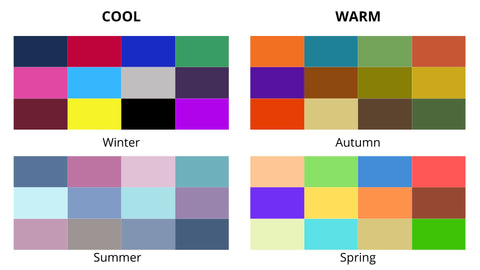
When you see the effect of colour for yourself, I think it really helps you to feel more confident. Often clients who didn’t believe they could wear a bright colour are wowed when they see how great that colour looks on. Or someone who has always felt comfortable in soft pastels is very happy to see how well they work. Sometimes a client will tell me it feels like they’ve come home, they feel empowered, or excited by their colours. Sometimes a client will say they used to wear their colours and had for some reason stopped and now feel excited to rediscover them. You should feel a real affinity with your colour palette, like the true you is finally being expressed. As one of my clients recently put it "Knowing my colours has really changed things for me. I feel more feminine, more dynamic and in control. It has given me back the confidence I knew I had within in me and multiplied it."
Another reason why colour analysis is a sound investment is because it will save time and money. Your friend with a swatch in her handbag will be able to ignore the colours in the store she already knows doesn’t suit her, and just focus in on the ones that do – shopping is immediately quicker and easier. Putting outfits together from a single palette is also far quicker than trying to make colours work from the full spectrum. In a colour analysis consultation, your stylist should talk you through all of the properties of your palette, and how to put colours together to create outfits as well as which neutrals would work well for you, which saves a lot of decision making time in front of the wardrobe doors in the morning.
FIND OUT MORE ABOUT OUR COLOUR ANALYSIS CONSULTATIONS >>HERE>>
As well as being a personal stylist, I run a dress agency and I can’t tell you how many clothes are brought to me to sell with the price tag still attached. When I ask clients why they never wore it, many will sigh and say they just couldn’t make it work, or didn’t know what to put with it. By sticking to a palette of colours, we can make more outfits from less clothes as everything goes together, we can be much firmer with ourselves about which colours to buy, and it means that a cleaner, leaner streamlined wardrobe can be achieved. We’re also more likely to wear more of what we own and wear those clothes for longer as we come to explore and fall in love with our colour palette. In my online courses I teach clients how to create more sustainable planet friendly wardrobes, and working from a colour palette is always one of the first principles we cover. It’s fundamental to not only saving money, but also creating a ‘less waste’ wardrobe.
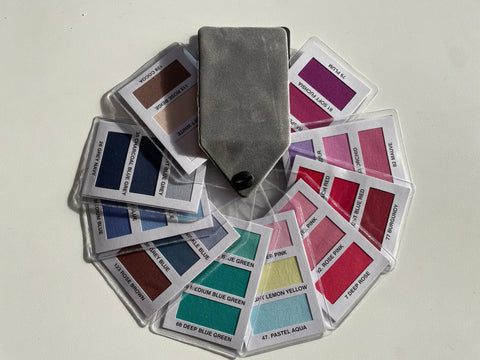
How do I get my colours done?
To really understand your colours and to make sure you are choosing the right colours for you, I recommend you see a professionally trained consultant rather than trying to figure it out for yourself. The most important analysis they will conduct (in seasonal analysis) is to figure out whether the undertone in your colouring is warm or cool toned. This is really difficult to assess yourself and is often only revealed through the draping process.
Colour analysis works in person or online, and the choice of which method you opt for is up to you and what kind of experience you want. In person consultations can often feel more like a pampering experience – you’d most likely go to visit your stylist in their studio and meet them face to face. You might also be able to book a consultation to enjoy the experience with a friend or family member. A note of caution; some image consultants will run colour analysis sessions like a group class, so you could turn up and find that you're not the only one there. This is fine for those who enjoy that kind of experience, but some clients find that looking at colour can be a deeply personal and sometimes emotional experience and would prefer to be able to spend the time exclusively with their consultant and maybe a small group of trusted known friends. Just check before booking, and expect to pay a bit more if you specifically want a one to one consultation. An online consultation can be done from home, and is often a more time efficient option which has quite naturally grown in popularity in recent years. It also means you are more likely to get that one to one time with your consultant and you should be able to request to record the consultation so you can watch it back afterwards and perhaps pick up on things that might get forgotten in a face to face experience. Many consultants now offer both options, so think about what works best for you to help you narrow down your search.
Start by searching for personal stylists or image consultants who are trained in colour analysis. There are a couple of larger brands who offer colour analysis through their franchisees, but there are also independently trained consultants. You’re looking for someone who is experienced, and who resonates with you. Take the time to check out their website or social media channels, read their online reviews or sign up to their newsletters to get a feel for whether they are someone you can work with. A good image consultant will be able to demonstrate their credentials, will have experience of in person and/ or online consultations and will most likely be someone who has a natural colour sensitivity to see and asses the more subtle colour changes in a client. It's also worth thinking about what your preferred learning style. If I have someone who takes time to absorb information for example, I offer a follow up a few weeks later to answer any questions. Sometimes a client might ask me to record some voice notes as a follow up to the service and every client gets a full colour report of the key findings from the session with advice on specific make up brands and colours for example.
If you’d prefer an in-person consultation, you’ll need to look for someone within the radius of how far you’re willing to drive and allow time (an in-person consultation takes anything between 1 and 3 hours) for the travel and the consultation. If you opt for an online experience, then you don’t need to limit your choice of consultant by geography.
With an in-person consultation you would usually be asked to attend without wearing any make-up, and the process would be explained to you before you are draped. Draping is where different coloured fabrics are placed across your shoulders and the consultant will study the effect the colour has on your face to see if it compliments or fights your natural colouring. The consultant will work through a process of examining certain tonal colours to determine the palette they will recommend to you. Often in a personal colour analysis a make-up session is included to demonstrate the make-up colours that will also compliment your tones. At the end of the session, you are usually presented with a small pack of fabric swatch colours which reflects the colours that works best for you.
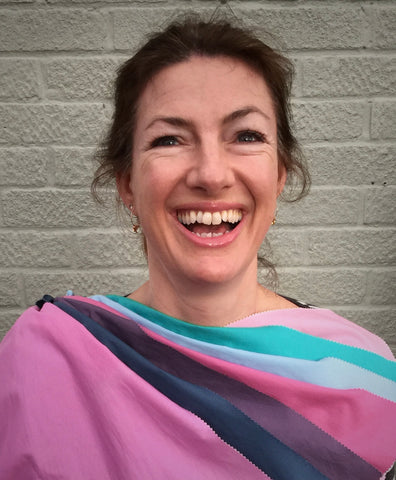
With an online consultation, you will most likely be asked to take and send a selection of selfie head shot photographs, taken in natural daylight and with no make-up on. Your consultant will then use these images to conduct the colour analysis in advance of the online consultation, usually by placing different colour blocks around your photograph to determine how the colour works with your natural tones. You’d be sent a link and a date to meet your consultant online where he or she will then present the results of the analysis to you. They should make sure you can see the positive and negative differences they can see in the draping process and they should explain your palette to you, perhaps by demonstrating outfit examples, make-up colours and your swatch. You should then receive a fabric swatch pack in the post. The advantage of online analysis is it can be done without leaving home and saves time as all the live analysis is done in advance by the consultant and so the online consultation usually takes around an hour.
As to the cost of a consultation, there shouldn’t be too much difference in the price of an in-person or online experience. Expect to pay anything between £120 and £200 for a colour consultation. Be wary of free or low-cost methods offered online as often these are not services offered that focus on you the individual or offer any one to one time with your consultant.
Five things to consider before booking a consultation:
- Think about whether you’d prefer a seasonal colour analysis, or a tonal system.
- Consider if you want to visit a consultant locally for an in-person consultation or whether an online analysis session would suit you.
- Use google to search for a trained personal stylist, image consultant or for colour analysis near you for an in-person session, or search for a trained online consultant. Be careful to read reviews and feedback to see if you like the style of the consultant. Most will happily arrange a phone conversation first to answer any queries or questions if you’re not sure. If you know someone who has already had a colour consultation, ask them if they would recommend their consultant. You can also find a list of trained consultants on the Kettlewell Colours website.
- When you’re at the consultation (either in person or online), feel free to make notes, and perhaps have some questions ready to ask. In my sessions, I invite clients to bring along a couple of things from their wardrobe that they love but don’t wear, and after the consultation we discuss ways it could be ‘rescued’ and worn. Most consultants will follow up with you a few days after your consultation to also answer any questions or queries you have about your colour palette.
- Avoid any major purchases on clothes or make up until after your consultation. If at all possible, avoid getting any colour added to your hair, as you may well decide you want to explore changes or try new colours afterwards.
If you'd like to read more about our colour analysis services, you can CLICK HERE to go to our colour analysis page. You can also find information on Online Colour Analysis and In Person Colour Analysis on the site under Personal Styling Packages
Have you had the benefit of a colour analysis? What was the biggest positive for you? And what advice would you give someone who is thinking about it for the first time? Leave your thoughts in the comments box below!
If you enjoyed this blog, you might like our blog called "What a difference a colour can make!"


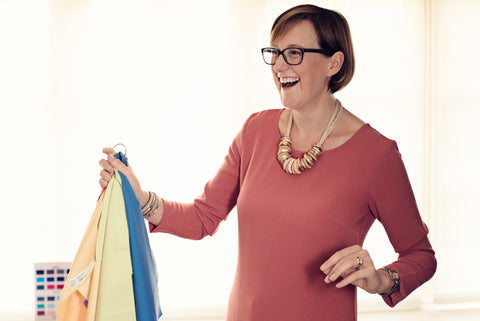
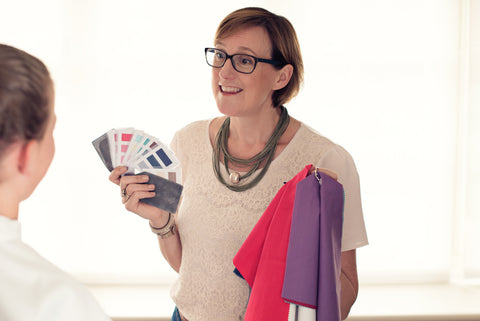
Looking into getting my colors done. Where should I start?